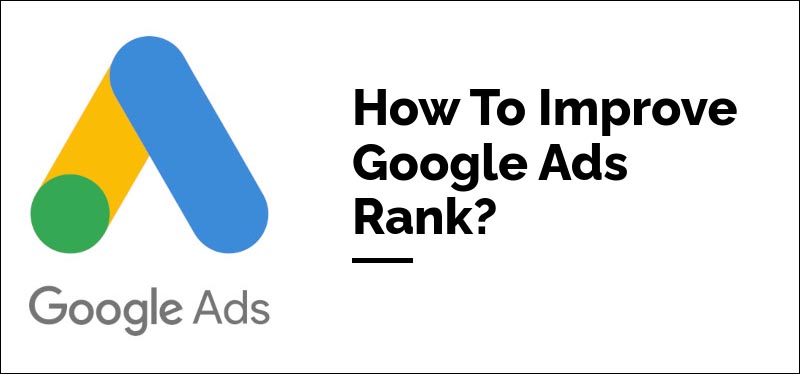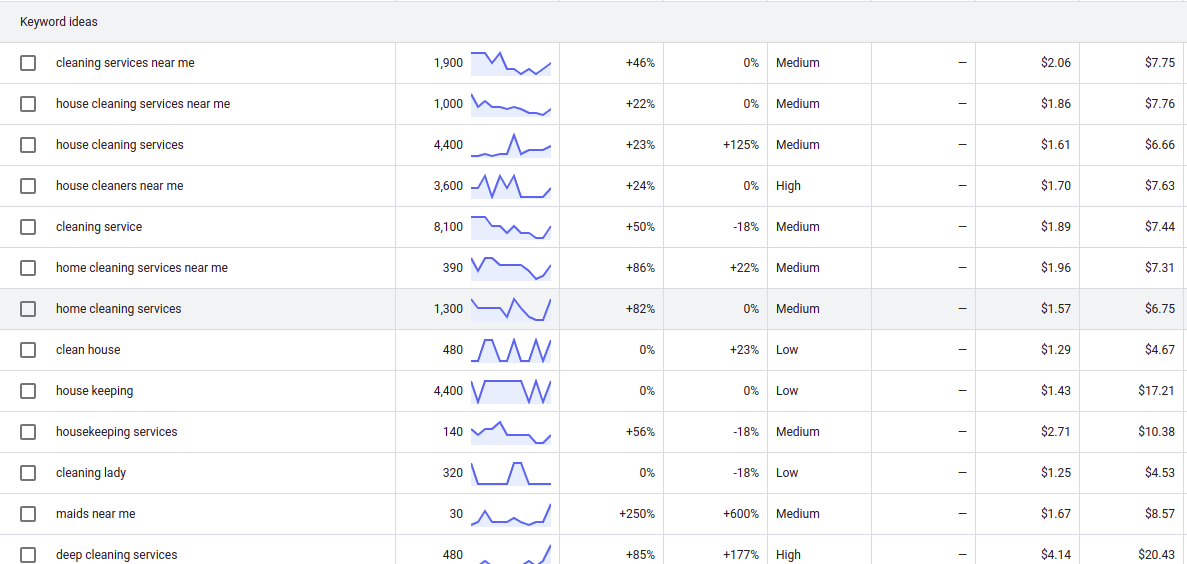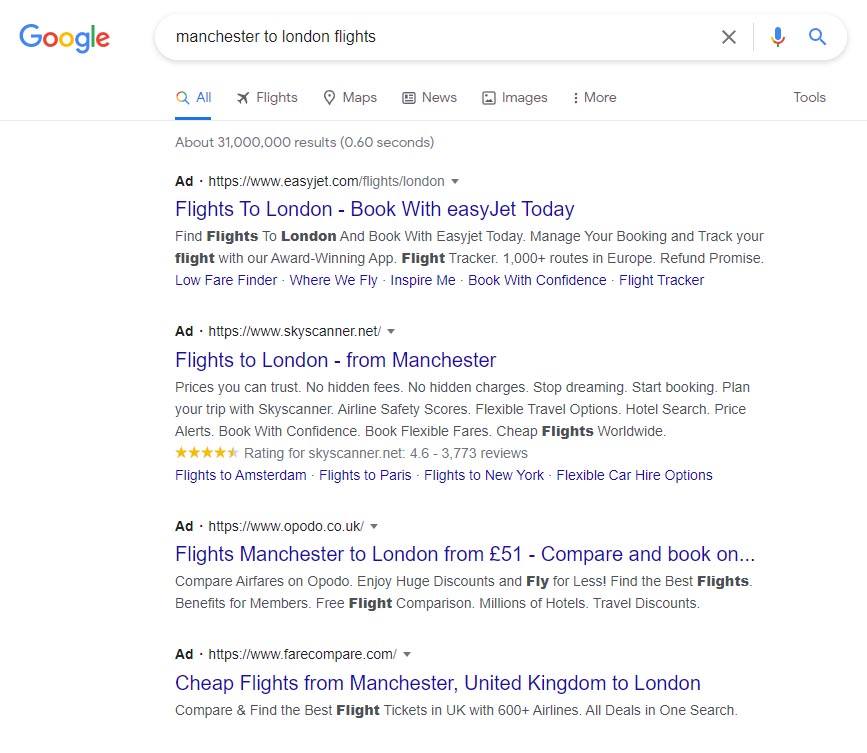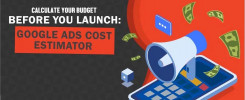We all know the value of the top spot in Google Ads. The reason is simple, the higher you rank in Google Ads, the better chances you have of getting more clicks and conversions.
Whether you would like to achieve the top spot at any cost or just like to maintain a good position with the lowest possible cost, this guide you help you achieve exactly that.
If you are new to Google Ads then it is strongly recommended that you should work with an expert Google Ads consultant to get the job done.
We are an expert Google Ads agency service provider and we help clients to get the best ROI with data-driven campaign optimisation.

How to improve Google Ads rank and spend less?
In this post, we will closely look at the various optimisation techniques that can improve the Google Ads position and at the same time, keep the cost low. If you would like to learn specifically about lowering the cost then please our post on how to reduce Google Ads costs.
Let’s get started.
Before we get into specific tips, it is important to understand the Google Ads auction process.
Learn ad auction & position basics
Every time someone does a Google search, the Google Ads auction decides which ads to show and in what order. Therefore, understanding how Google Ads auctions work is critical to optimizing the position of your ad.
Google Ads auction considers 3 main factors
- Your bid
- The quality of your ad
- The expected impact of Ad extensions
And, the ads quality score is determined on the basis of the following 3 components:
- Expected click-through rate (CTR): It is the prediction of how often the visitors will click on your ad based on Google’s historical performance data for EVERY search query.
- Ad relevance: Ad text must match the keywords.
- Landing page experience: It helps the visitors find what they are looking for with the help of using relevant and original content. It should be easy to navigate for the users. Be transparent about the nature of the business and how you will utilise users’ personal information.
- Ad extensions: The system estimates, the extensions and other ads format you use will impact your ads performance.
The following video explains these components in detail:
Start with a fresh Google Ads account or campaign
It is always advisable to start with a new campaign or Google account rather than optimising an existing one. This would help you know the entire history of individual campaigns or accounts from the start. Also, it allows you to take the right actions to boost the position of your ads.
If you have an existing ad campaign, you can optimise the same, but certain factors come into play in that case. You will have to analyse the campaign and learn the past performance. It is essential to note that automated bidding heavily relies on past performance data.
If your existing campaign has a decent performance, it may be worth optimising that instead of starting a new one. You can utilise the past performance of the existing campaign in your favour and yield better results.
So, be mindful while making this decision.
Here are some of the advantages of starting with a fresh slate.
Better performance tracking
When you start working with a new and organised account, you’re able to track your performance far more effectively. You won’t have to look at every corner and crevice of your unorganised account to track performance.
A fresh start gives you a better understanding of what needs to be worked upon and what is working just fine.
When there’s too much going on in one account, you won’t be able to determine exactly what is working in your favour. However, narrowing down the options is an excellent way to pinpoint negative or positive performance.
No past issues
You might feel that it would be easier to organise your old account instead of starting a fresh one.
The old account will seem familiar because it contains all of your previous data. However, you are more likely to encounter multiple issues with that account.
Dealing with these concerns will be more time-consuming and outweigh any benefits that you might expect from using historical data.
In the case of large and unorganised accounts, there can be many tiny factors that make it difficult to predict the outcome of any changes.
Use manual bidding at the beginning
Google Ads offers you both manual as well as automated bidding options. Now you might be wondering, what is the difference between both these bidding options?
Manual bidding is when you set a maximum cost-per-click (CPC) amount for your keywords.
On the other hand, in automated bindings, the system set the bid on your behalf. With manual bidding, you can control the maximum amount you are willing to pay for each click.
Your monthly budget will be the same regardless you use manual or automated bidding based on the budget you specify.
Generally, Google’s machine learning algorithm for automated bidding aims to perform better than manual bidding. However, AI (Artificial Intelligence) will struggle to provide you with any decent conversion without past data. Visit Google’s manual CPC bidding page for more info.
Starting a new campaign
If you are setting up a new ad campaign, you may like to use manual bidding at the beginning. Once you get 30 to 50 conversions in a month, after which you can think about switching to automated bidding.
Budget: With this process, you may end up paying a bit higher at the start. However, it will add value when you turn into automated bidding like Target CPA/Maximize Conversion – Target CPA.
Manual CPC in a long run
Many advertisers still choose manual CPC as their primary bidding strategy. This allows them to control the CPC and gain market share. If your industry has lower or mid-level competition, you may get a high ROI using manual CPC.
Let’s look at the benefits of using a manual bidding strategy.
Complete control: You get full control over your bidding and don’t have to rely on automated strategies. You can ensure that you optimise the bids as per your campaign objectives.
Quick reactions: If you notice any discrepancies in your performance, you can fix those instantly by running a quick ad preview and diagnosis tool.
Immediate changes: While automated bidding takes time to learn changes, manual bidding implements the changes almost immediately.
Bid high at the start to boost CTR & quality score
CTR (Click-through-rate) is a crucial metric in Google Ads. Hence, having a high CTR is important for your campaign’s success. CTR is basically the rate at which your campaigns are getting clicks.
If your CTR is high, it means people are resonating with your ad and clicking on it more. Moreover, a higher CTR also contributes towards boosting the quality score of your keywords.
A higher click-through rate indicates that you are fulfilling the user’s search query well with the best match of your keywords, ad text and landing page experience.
It is important to boost the CTR at the beginning as it helps increase the quality score of your keywords. When you bid higher at the start, it will provide you with a chance to boost the ad position at the top. This will result in a higher CTR.
You can make use of the Ad Preview and Diagnosis Tool to check your ad position. It will also let you adjust your bids accordingly to gain a higher position.
Note: Bid is not the only factor to boost your Ad position. You also need to have high-quality, relevant ads and the best possible landing page experience.
Create the most relevant ads
Ad relevance is another very huge factor that helps you increase your quality score. This is generally a missed opportunity by most the general advertisers. So, here’s where you can increase your chances of outstanding them.
Create ads that explain your keywords, product, landing page, and associated offer well. Include your point of difference as well. You may get a bit higher CTR with a bit lower position if your ad is very compelling.
It is also necessary to insert the keywords in the ad’s headlines and choose the correct landing pages.
Make sure to follow Google’s policy guidelines and avoid getting your Google ads disapproved.
We’ve curated a few tips and tricks to help you create relevant and compelling ads.
Be specific: Your goal is to match the user’s query. Ensure that your copy is clear, concise, and to the point.
Always include a CTA: There is pretty much no merit in an ad without a call-to-action. You should spell out what you want the users to do in a simple but enticing manner.
Don’t exaggerate: Don’t make false promises to the users. Your landing page should reflect whatever you offer in the copy. If you include something you can’t back up, it will frustrate the users.
Place keywords strategically: Yes, keywords are crucial, but you can’t just sprinkle them wherever you like. Ideally, you should use your keywords in the URL slug, Headlines, and Descriptions. You should also use the keywords on your landing page.
Make your landing page relevant and optimise for mobile
By creating the landing page closely associated with your Keywords and Ads will help you to engage users effectively and it will also help you to boost the quality score of your keywords.
It is also important to optimise your landing page for mobile as well as other devices. Most of the businesses get the majority of their traffic via mobile and hence you must optimise for mobile.
If your landing page is not optimised for mobile, the users will leave without taking any action.
People often think that they can gain the top spot just by bidding high, but that’s not the case. Bidding is definitely important, but you must work on other factors like creating a highly usable page.
Let’s run through the essential factors to consider while creating a Google Ads landing page.
Attention-grabbing headline: The headline is the first that a prospect will read when they are redirected to the landing page. It must be a strong line that reiterates the offer from the ad and encourages the visitor to continue reading.
Match the ad keywords: The landing page should match the keywords and offer described in the ad copy. It should also reflect the CTA from the ad text.
Easy to navigate: You should make it easy for the customers to perform the action you want them to. For instance, place clear buttons for “buy now” or “contact us”.
Mobile-friendly: The landing page needs to be optimised for mobile devices as well. It should be quick to load and easy to explore.
Relevant copy: The content on the landing page should be clear, concise, and actionable. It should be relevant to the keyword, and you should include your USP, advantages, and testimonials along with a lucrative offer.
Add all possible ad extensions
Ad extensions are a section of your ad where Google allows you to display all the important information. Here’s where you display your business address, store rating, phone number, and other important links. In a competitive market, the right ad extensions can help you gain a competitive edge.
They will make your ad more relevant and useful to the user. Hence, you should consider adding all the possible ad extensions that help meet your business goals. Moreover, you do not have to pay extra costs to use the ad extension option.
The expected impact of ads extensions will help you win actions and possibly get a higher ad position. Add all the relevant ads extensions which meet Google’s ad policy.
Here are some common ad extensions that should be a part of your ad:
- Sitelink extensions: These are additional links that take customers to specific web pages. With the help of site link extensions, you can feature another relevant page that may impact your click-through rate.
- Callout extensions: These are descriptive texts in your ads like attributes of your products or services. The extensions may appear as site links, but users will be unable to click on them. Hence, they can be treated as additional snippets.
- Call extensions: They allow users to feature your phone number where users can call you directly from the search results. This will also be very convenient for mobile users since they can directly connect with your business from the ad.
Get a higher position with manual bidding
We have already covered what manual and automated bidding means in the above section. You know that manual bidding is a great way to control your bid and yield results simultaneously.
There is no question that automated bidding like Target-CPA has gained popularity because it performs really well with a proper setup. However, at times you may realise that automated bidding becomes sluggish and get far fewer impressions and hence you may consider manual bidding as one of the options to solve this problem.
With manual bidding, you can control and gain the top spot in most cases and get needed conversions.
Note: As the involvement of AI is far less in manual bidding, you may get the top spot but the conversion may not be that great in some cases. And hence, it’s advisable that you work with an experienced Google Ads consultant to guide you with the right bidding options.
Tip: Adjust your bid to gain the position and the CPC bid you are comfortable with. Based on the conversion data, you can apply changes as needed.
Get a higher position with automated bidding
Automated bidding like Target-CPA is one of the highest used bidding strategies these days.
In automated bidding, Google will automatically set the bid amount to promote clicks and conversion. Two issues are solved through automated bidding:
- The correct amount of bids helps attract qualified buyers.
- Check whether the bids are extremely high and target users who are not the target audience.
Automated bids will be unique for each auction so that you do not have to set them for ad groups or keywords manually. It will analyze the past performance and use it for future bids.
Good planning from the start with better campaign setup, conversion tracking and with the use of automated bidding you can possibly get the best position and return on your ad spend.
Quick Tip: Use automated bidding in campaigns where you have decent conversions and allocate a decent cost per conversion value.
Learn more about the positives and negatives of automated bidding.
Get the top spot at any cost
If you would like to get Google Ads top spot at any cost then you may like to use Maximise Conversion without target CPA.
The cost per click will be decided by the system and it will aim to show your ads most frequently and in top position.
Run experiment CPC / CPA
Google Ads experiments allow you to duplicate your existing campaign and make necessary changes. However, the performance of your original campaign will not suffer because of this. You will need to activate a draft for the experiment and compare the differences to your original campaign.
If your original campaign is run on manual CPC, you can run an experiment using automated bidding. This will show you how the ad would perform if you choose another bidding strategy.
You can choose the traffic percentage you want to divide between your original campaign and the experiment. There is also an option to specify the start and end dates for the experiment. It is better to divide the traffic 50-50 so that you can compare the changes properly.
Conclusion
Most people focus on increasing the bids to increase their Google Ads rank. However, that is not an efficient solution. We have provided you with several alternatives that you can use for this purpose.
You need to remember that bidding, CTR, relevancy and enhanced user experience are key factors for higher ranking. Therefore, you need to increase relevance using the right keywords, ads for the target audience, and landing pages.
For any queries or help regarding Google Ads for your business, you can contact our agency. We can guide you on the right path and help increase the ranking of your business on Google. Learn more about Google Ads cost and the management fee. We work with clients across the UK. No matter where you are located, we are just a call away.






